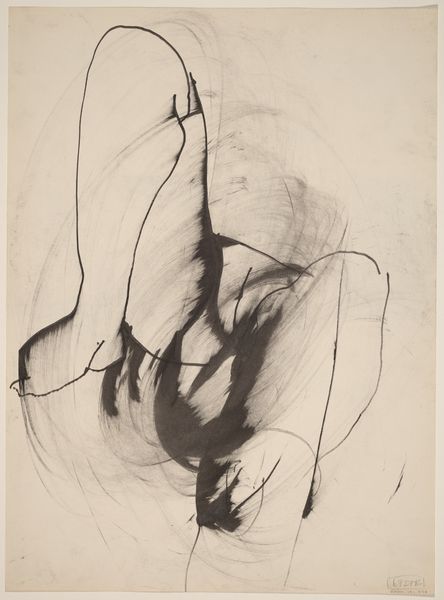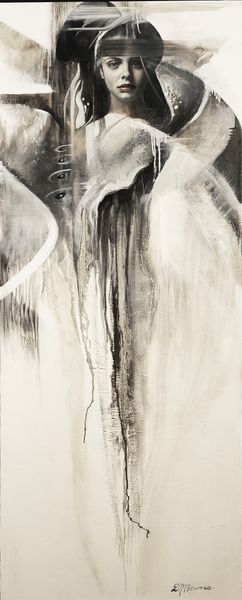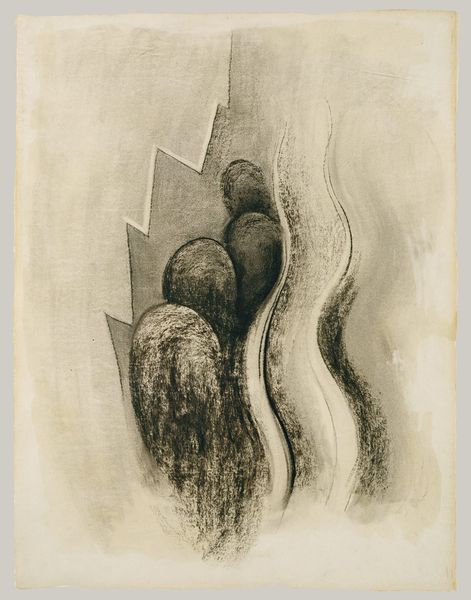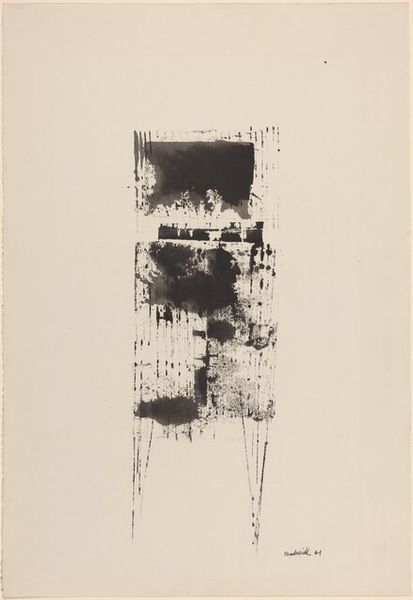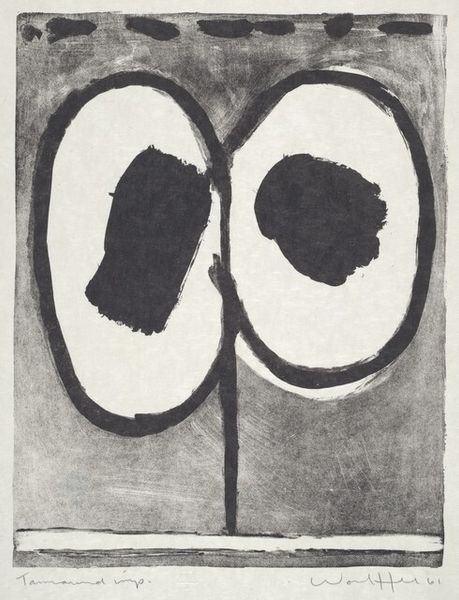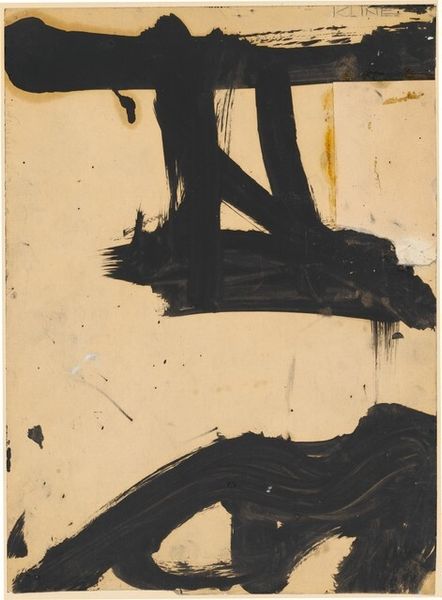
drawing, charcoal
#
drawing
#
charcoal drawing
#
pencil drawing
#
geometric
#
abstraction
#
charcoal
#
charcoal
Dimensions: 61.6 x 47 cm (24 1/4 x 18 1/2 in.)
Copyright: National Gallery of Art: CC0 1.0
Editor: Here we have Georgia O'Keeffe's "No. 4 Special," created in 1915 using charcoal. There's an evocative fluidity to it. What visual components strike you most profoundly? Curator: The composition directs our attention to the interplay between curvilinear and rectilinear forms. Consider how the amorphous shapes in the upper left contrast sharply with the more defined vertical lines dominating the lower half. Do you perceive how the varying tonal gradations contribute to this contrast? Editor: I see what you mean. The charcoal application ranges from dense, almost velvety blacks to these translucent washes of gray. How does O'Keeffe manage to unify these contrasting elements into a single work? Curator: The visual unity emerges through repetition. The curving forms, while seemingly distinct, are echoed in the subtle arch created by the converging vertical lines. Moreover, observe the restrained palette; the restricted tonal range creates a sense of cohesion. Semiotically, the contrast could be seen as representing a duality, or even a sense of dynamic tension, pushing the eye back and forth. Editor: So, it's the careful control of shape and tone, more than any specific symbolic content, that makes this drawing so captivating. Curator: Precisely. The aesthetic experience resides in the formal relationships themselves, inviting the viewer to contemplate the essence of form and line. What initially felt amorphous, has resolved into a far more nuanced structural understanding. Editor: This really opens up a fresh appreciation for her use of abstract form. Thanks!
Comments
No comments
Be the first to comment and join the conversation on the ultimate creative platform.



